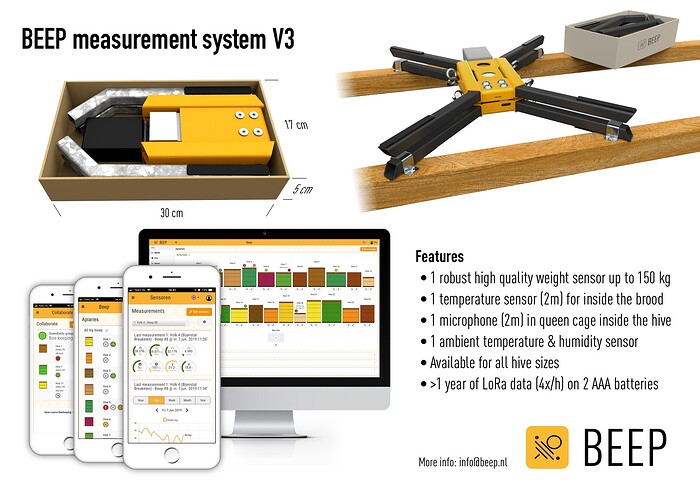About a month ago I set up the Beehivemonitoring.com sensors https://beehivemonitoring.com in three hives for a friend. I have no affiliation with the company, but after checking out a zillion IOT beehive monitoring projects I choose this one based on features and price (and lack of time to go the DYI road). I am very impressed with the system so far and wanted to share my findings.
The system uses a GSM based gateway which communicates with the scale and hive sensors using Bluetooth. Up to 100 scales or hive sensors can be connected with a single gateway. The GSM bit (and perhaps the BT bit as well) would be an excellent usecase for LoRaWAN, however it does the job and I guess it has some advantages (coverage, and perhaps the amount of data if 50 hives are using the same gateway).
First of all, the setup involved little more than putting a SIM card in the GSM gateway which runs on a 18560 3.3V battery (for about 6 months on a charge), putting the scales under the hives and the ‘heart of hive’ sensors inside the hive, and pronto, data appeared in the app.
The ‘heart of hive’ sensor measures temperature, humidity and sound (frequency) every 15 minutes, and operate for up to a year on a CR2032 battery.The frequency measurements are used to predict swarming behavior, and indicate the presence of a queen.
The scales use load cells which are not ideal for absolute measurements but fine for the relative measurements required for beehive monitoring.
The next thing that I think is very cool and a must for any beehive monitoring system, is the integration of the data into alerts for swarming, honey robbery (when a beehive is robbed of honey by other bees), the absence of a queen and other parameters vital for a hive. It also estimates the number of bees in a hive, although it’s not entirely clear to me yet what this is based on, I have the question outstanding with the beehivemonitoring.com people. Possible more data is needed than currently available to get to a realistic estimate of the number of bees. I can think of several parameters that could be used such as nightly respiration (as measured by the nightly weight loss), daily changes in weight indicating the number of flying bees, etc.
Anyway, in my view a prime example of what a good IOT solution entails. Some takeaways for beehive monitoring:
- load cells are ‘good enough’ for hive weight measurements
- acoustic monitoring adds value, it’s a must-have I think, more relevant than temperature and humidity
- the integration/interpretation of data into parameters relevant to beekeeping should be the goal, this is what really adds value
And of course a good interface (app or web) is a must.
My 2 cents 
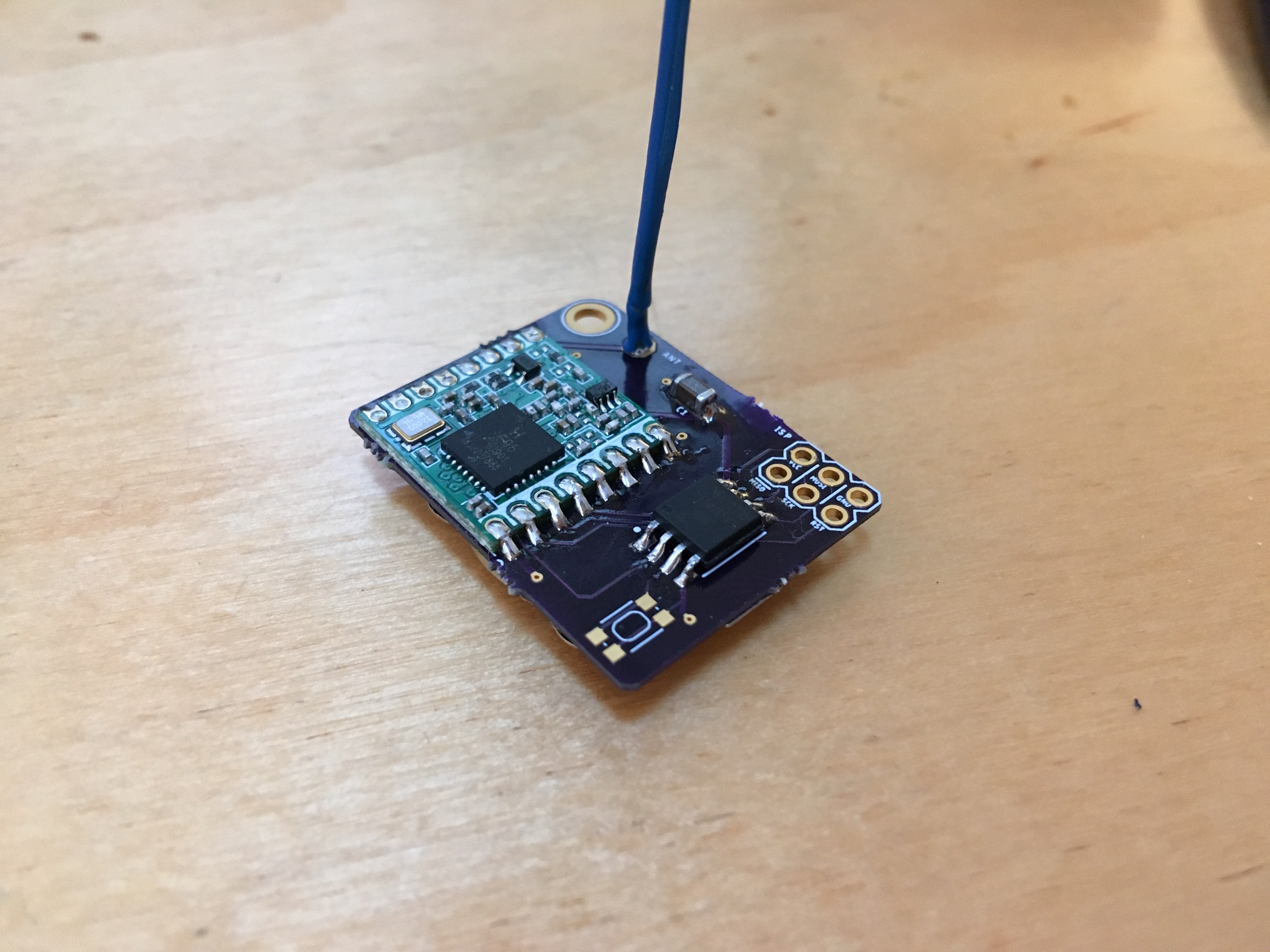
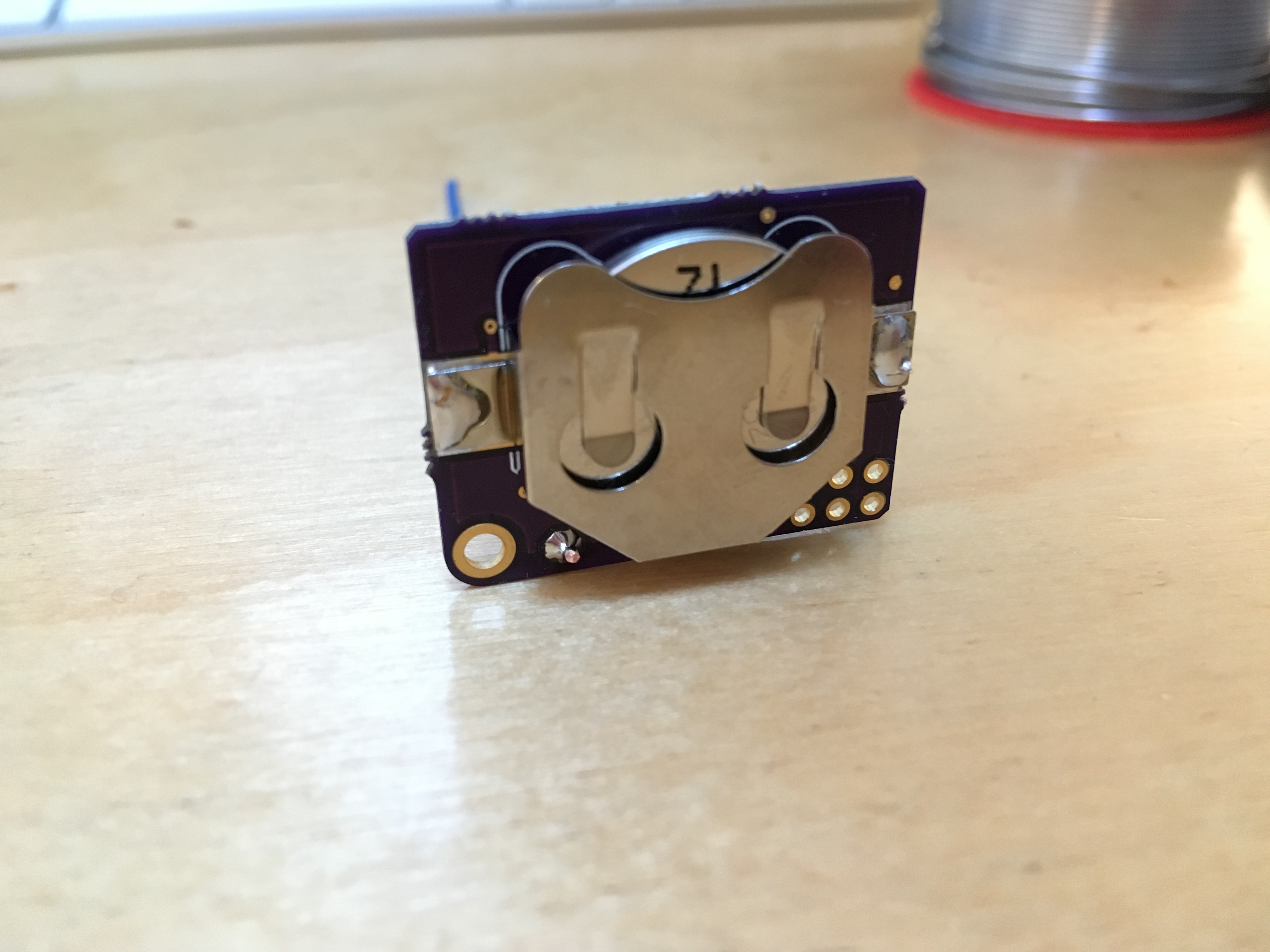
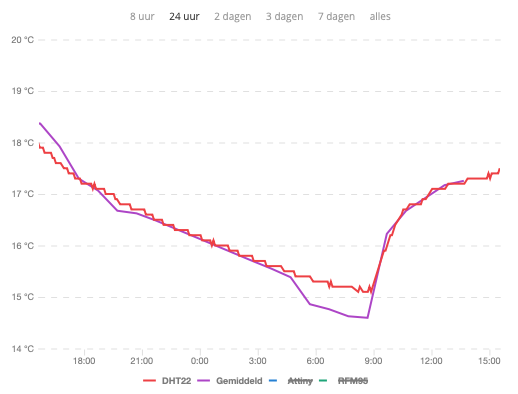
 :
: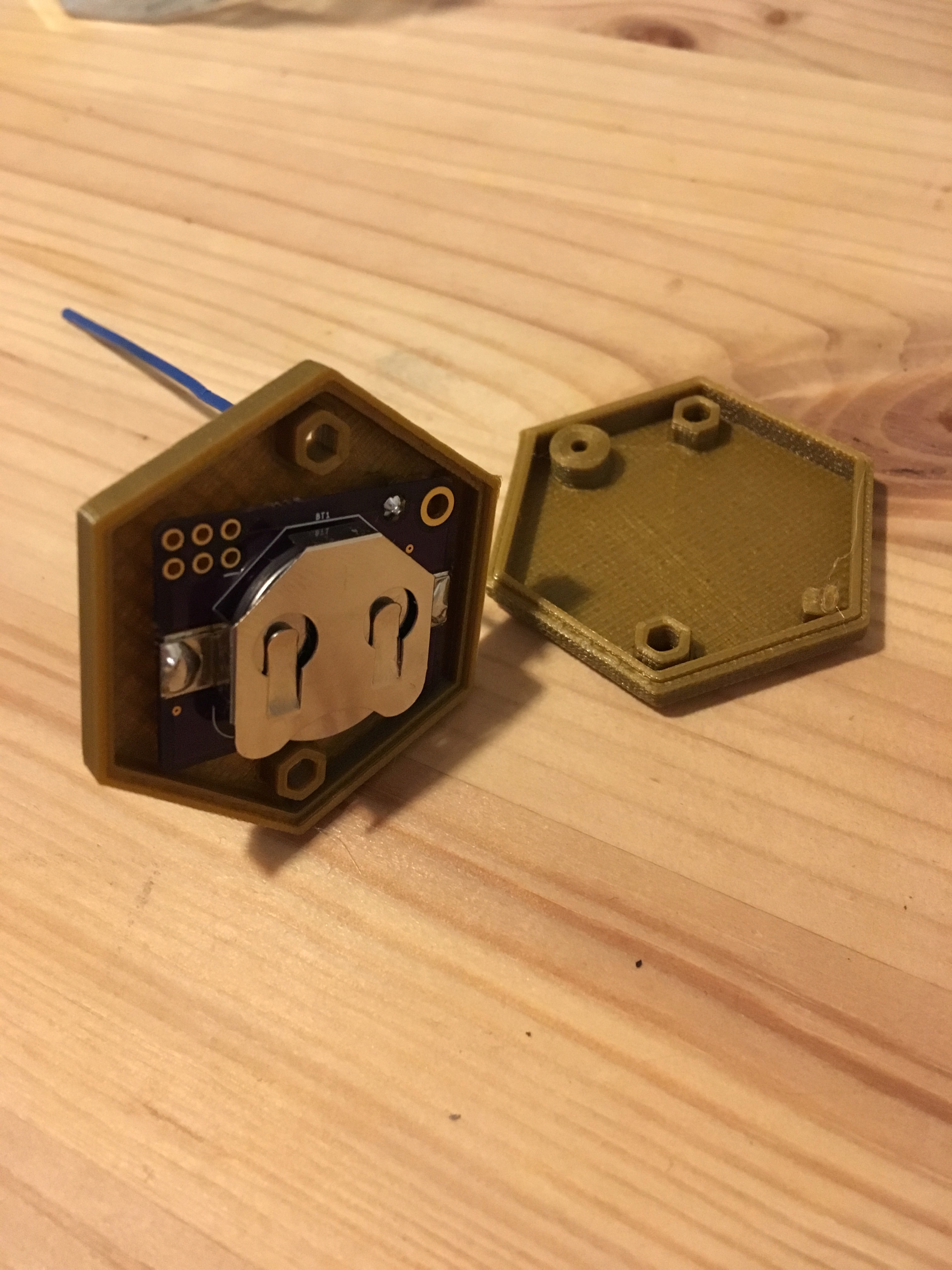
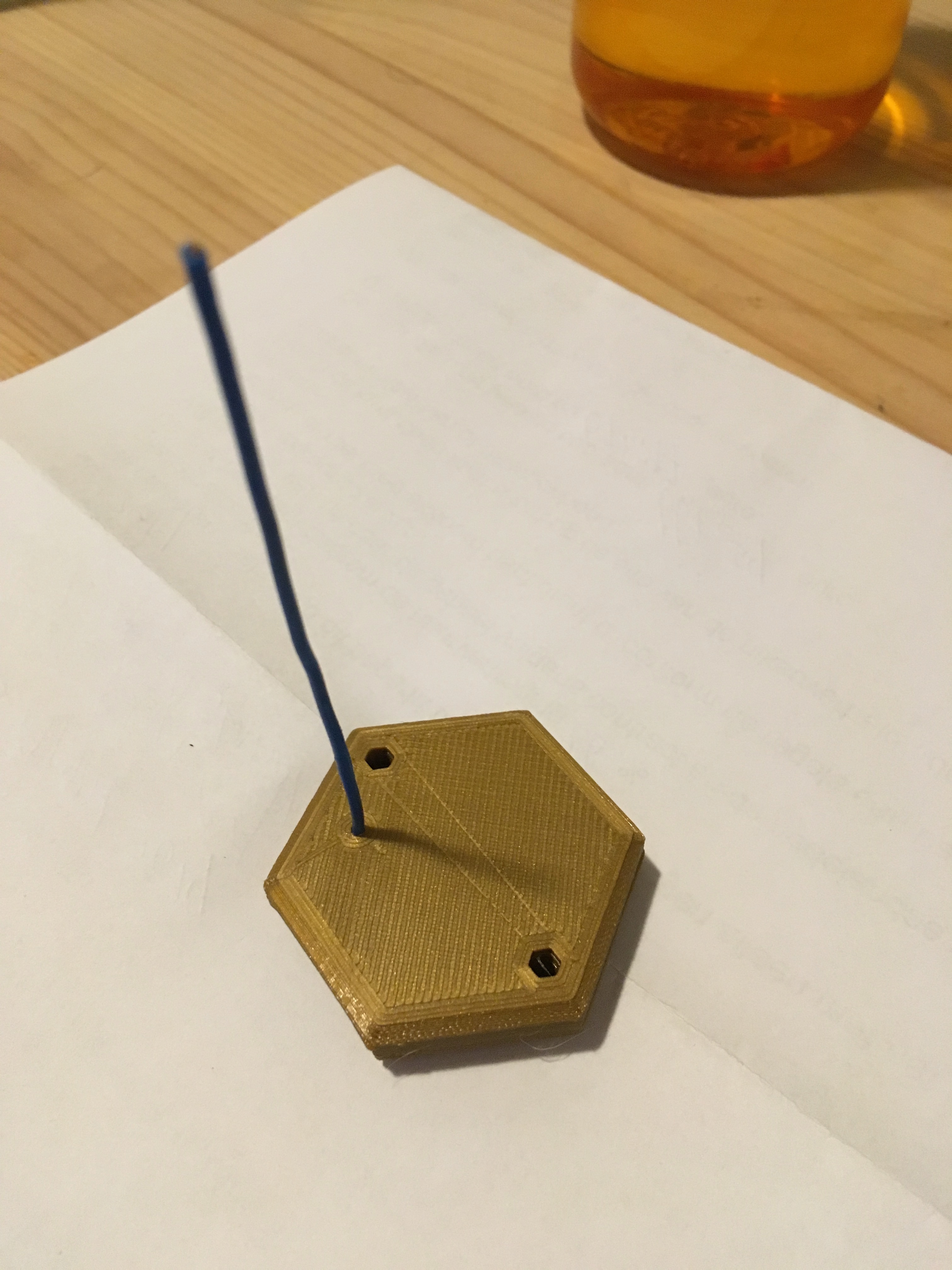

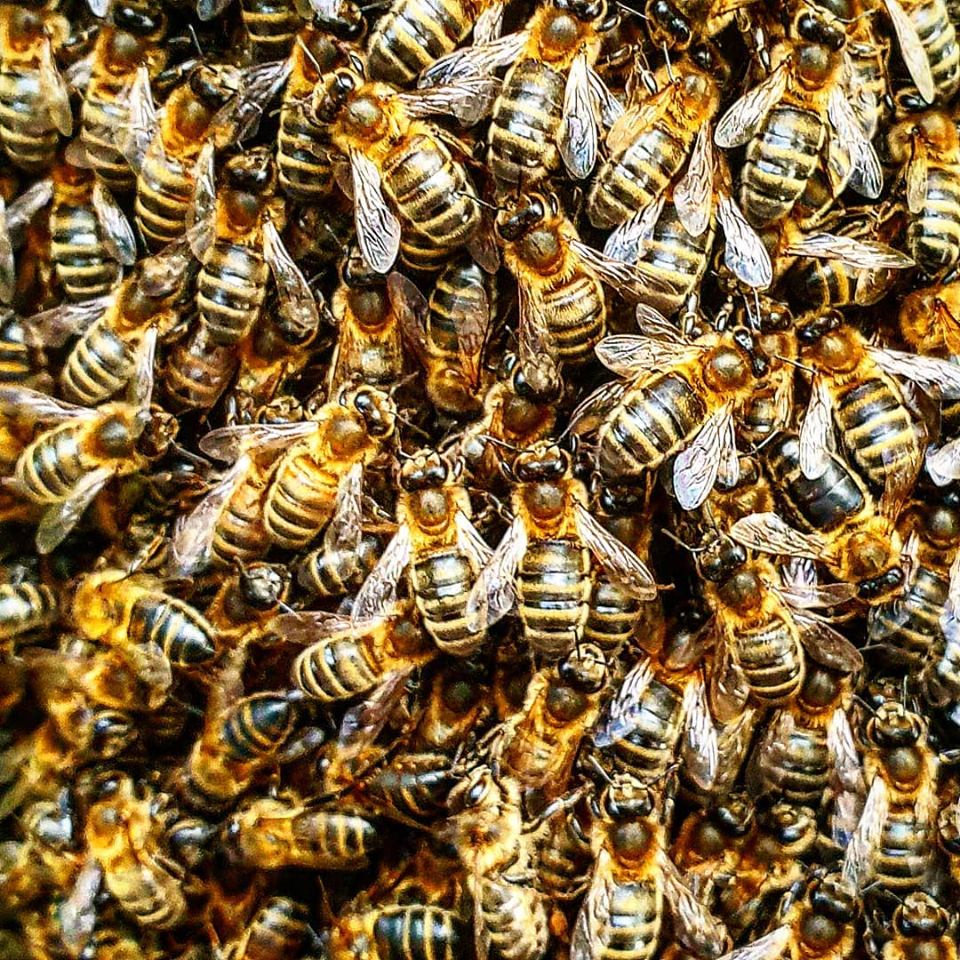
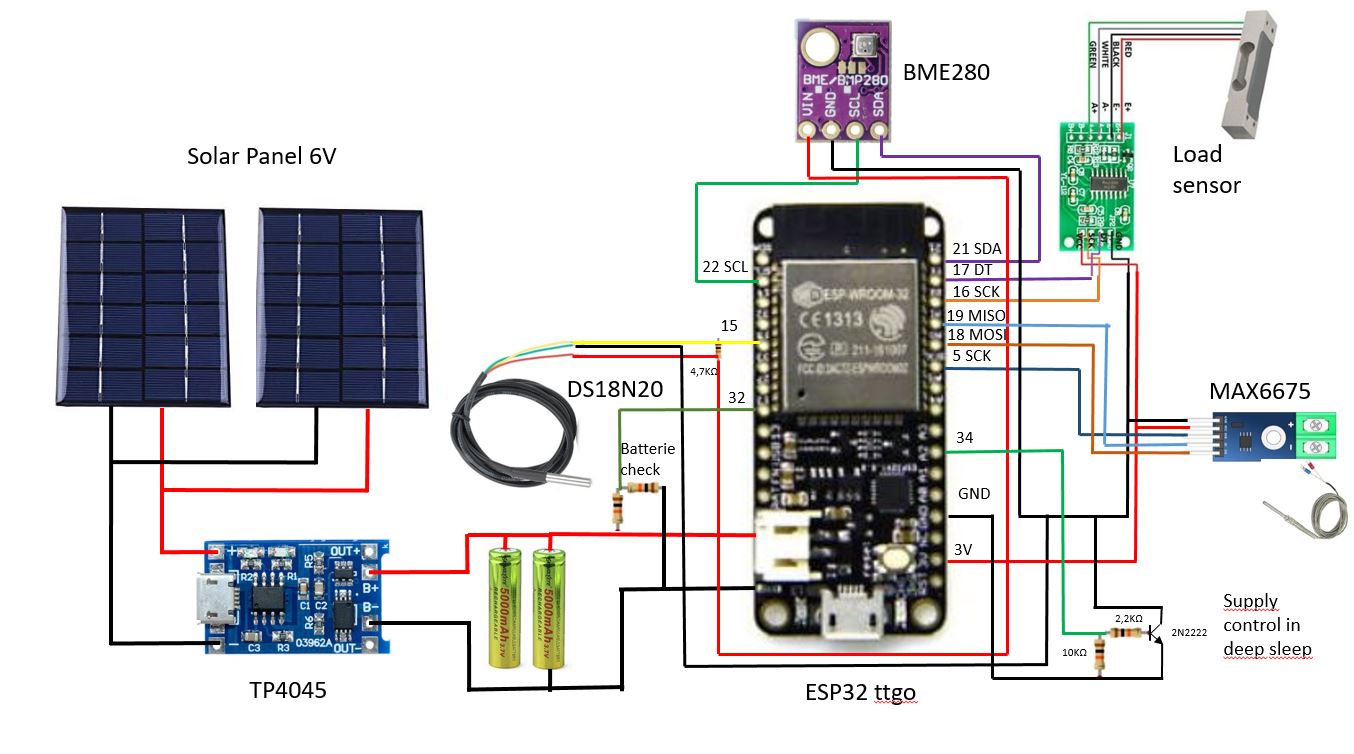
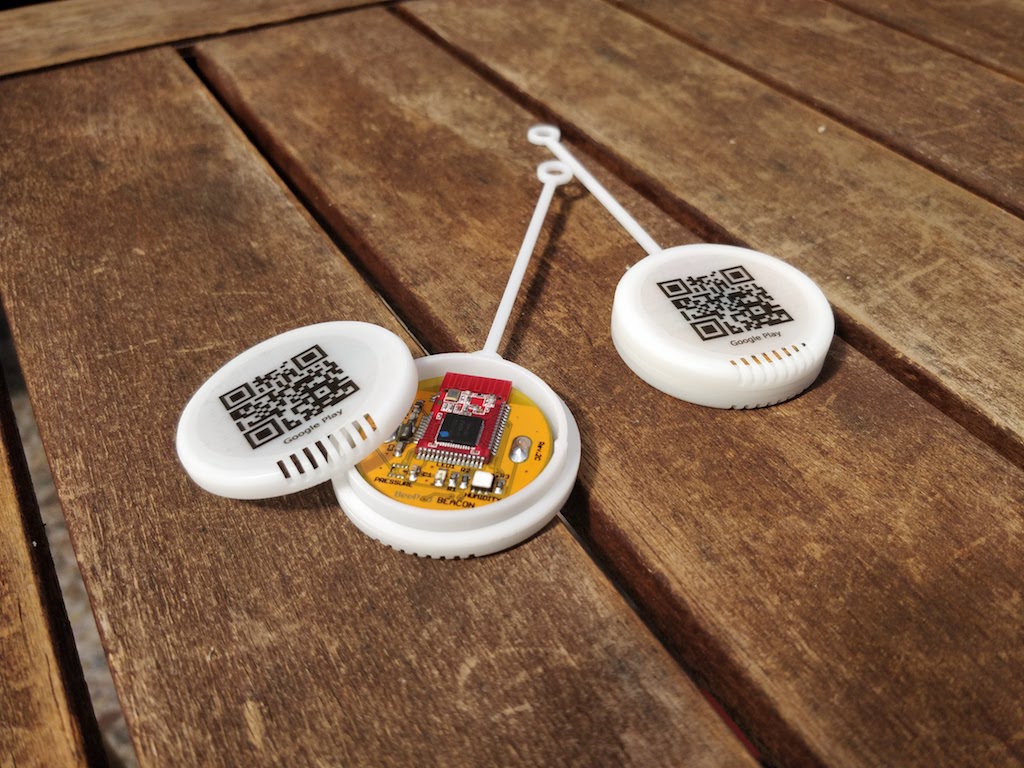 and still keeping it shrinking (more thin). Now being migrated to nRF52832 (on picture still nRF51822) and getting rid of extra height. Easily programmable with mbed. This is just bluetooth temperature beacon for in-hive placement. Bigger sensor takes measurement long-distance
and still keeping it shrinking (more thin). Now being migrated to nRF52832 (on picture still nRF51822) and getting rid of extra height. Easily programmable with mbed. This is just bluetooth temperature beacon for in-hive placement. Bigger sensor takes measurement long-distance 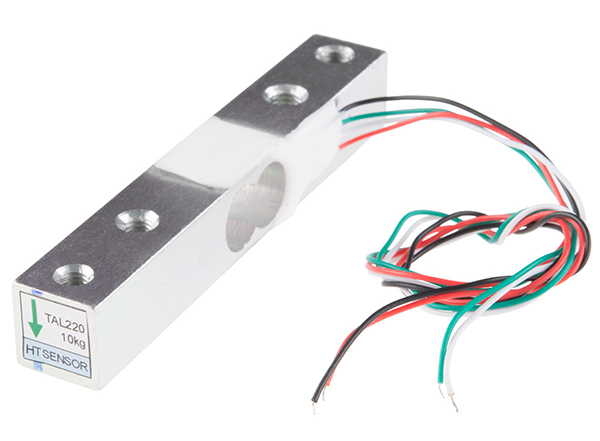
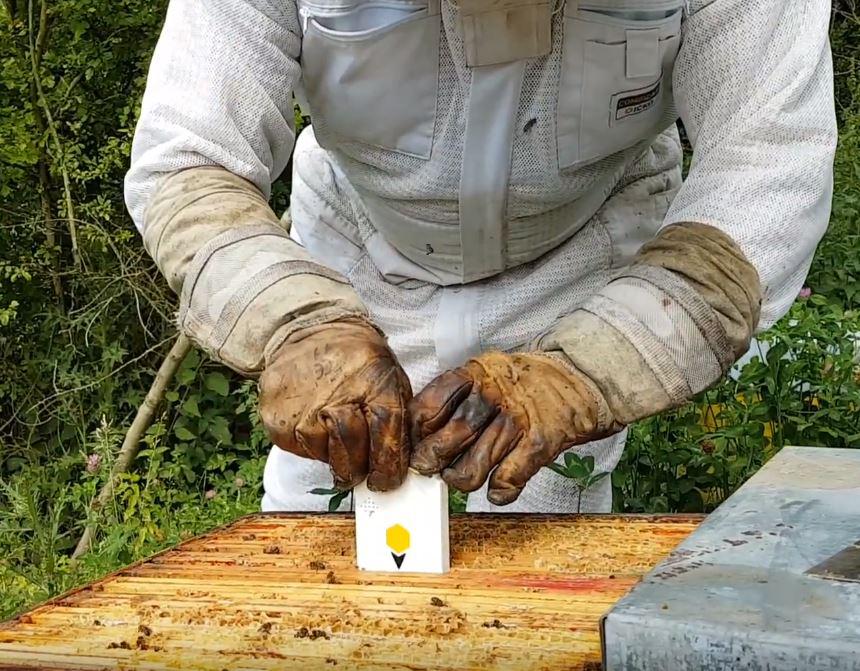
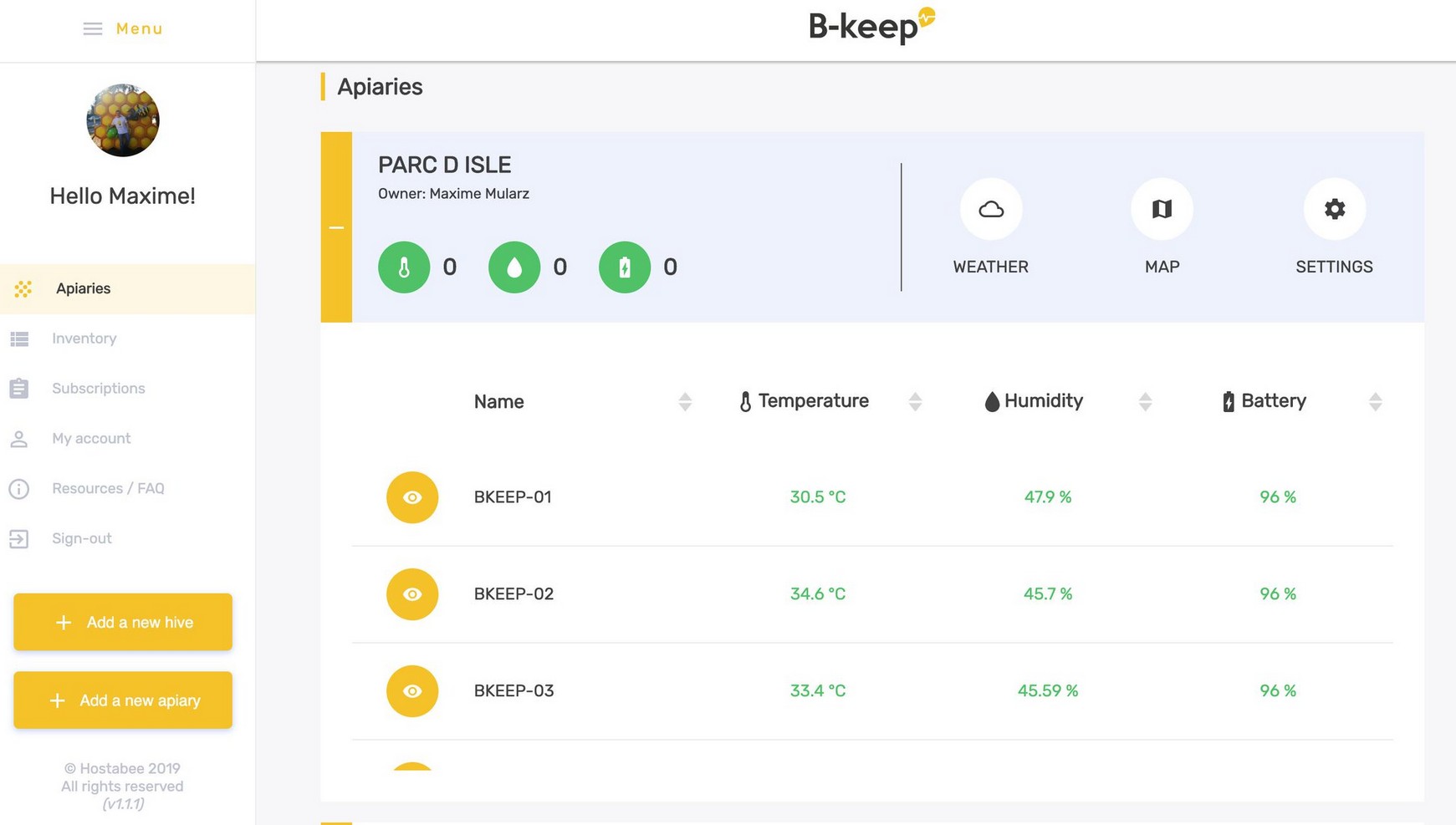
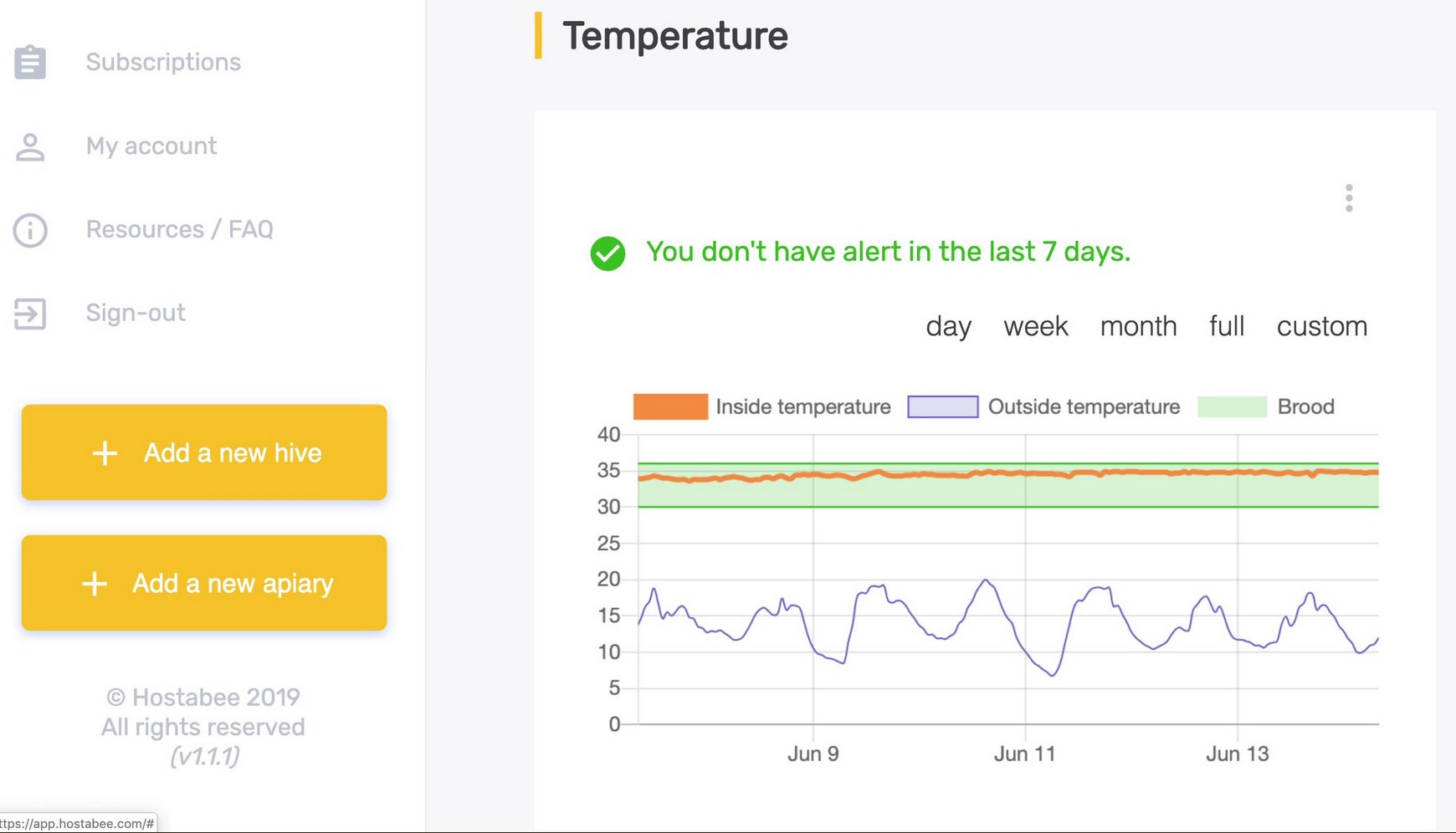
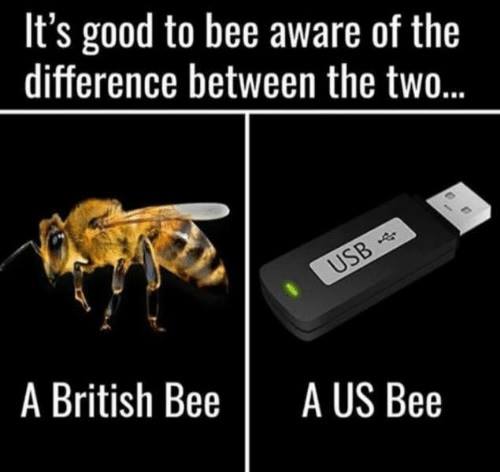
 … are there still bees alive nowadays ?
… are there still bees alive nowadays ?